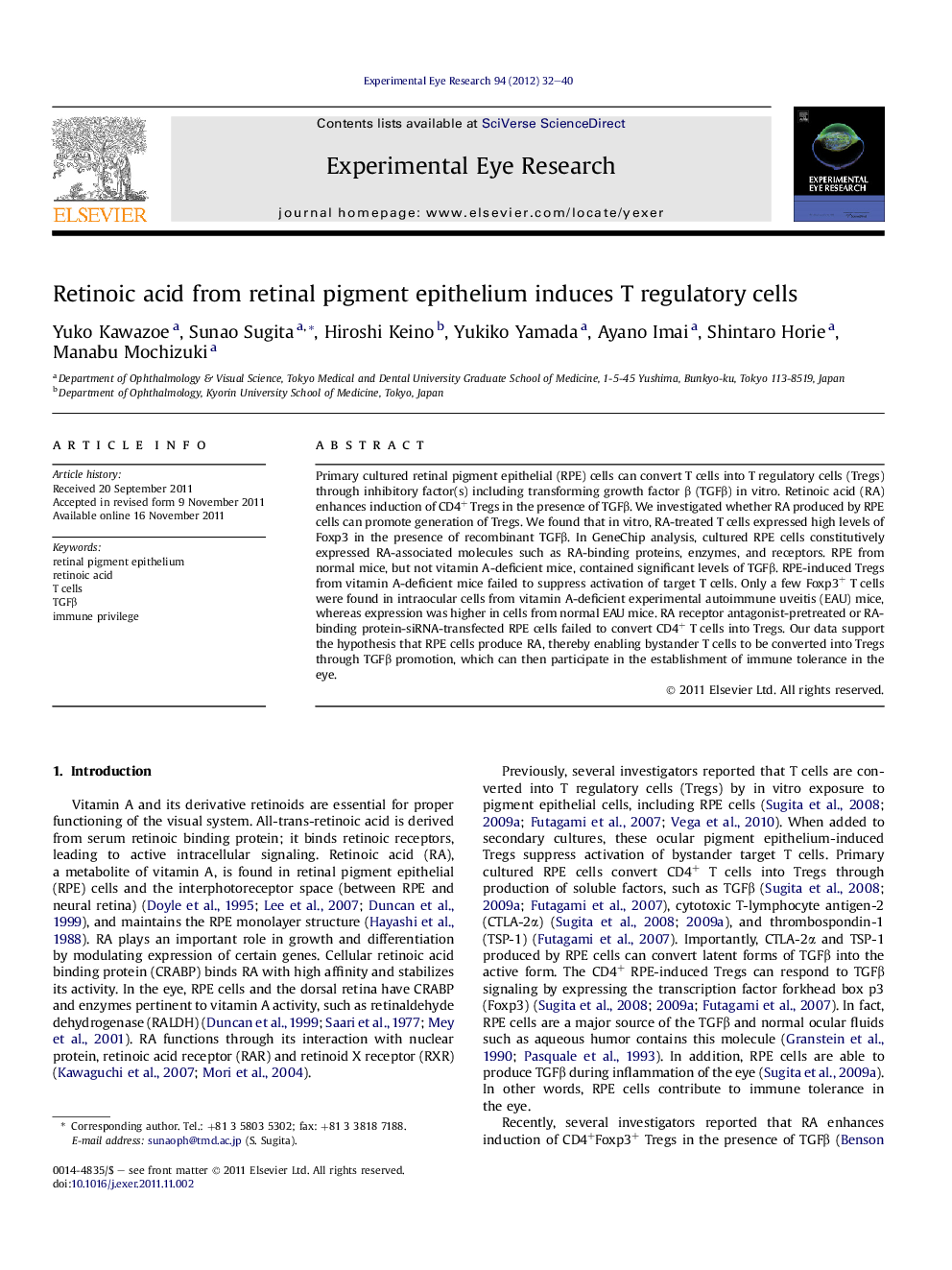| Article ID | Journal | Published Year | Pages | File Type |
|---|---|---|---|---|
| 4011514 | Experimental Eye Research | 2012 | 9 Pages |
Primary cultured retinal pigment epithelial (RPE) cells can convert T cells into T regulatory cells (Tregs) through inhibitory factor(s) including transforming growth factor β (TGFβ) in vitro. Retinoic acid (RA) enhances induction of CD4+ Tregs in the presence of TGFβ. We investigated whether RA produced by RPE cells can promote generation of Tregs. We found that in vitro, RA-treated T cells expressed high levels of Foxp3 in the presence of recombinant TGFβ. In GeneChip analysis, cultured RPE cells constitutively expressed RA-associated molecules such as RA-binding proteins, enzymes, and receptors. RPE from normal mice, but not vitamin A-deficient mice, contained significant levels of TGFβ. RPE-induced Tregs from vitamin A-deficient mice failed to suppress activation of target T cells. Only a few Foxp3+ T cells were found in intraocular cells from vitamin A-deficient experimental autoimmune uveitis (EAU) mice, whereas expression was higher in cells from normal EAU mice. RA receptor antagonist-pretreated or RA-binding protein-siRNA-transfected RPE cells failed to convert CD4+ T cells into Tregs. Our data support the hypothesis that RPE cells produce RA, thereby enabling bystander T cells to be converted into Tregs through TGFβ promotion, which can then participate in the establishment of immune tolerance in the eye.
► Retinal pigment epithelial (RPE) cells have immunosuppressive effects. ► RPE cells can convert T cells into T regulatory cells (Tregs) through retinoic acid (RA) and TGFβ. ► RPE-induced Tregs from vitamin A-deficient mice failed to suppress activation of target cells. ► RA-binding protein-siRNA-transfected RPE cells failed to convert T cells into Tregs.
